Sustainable cladding materials: what are the best options?
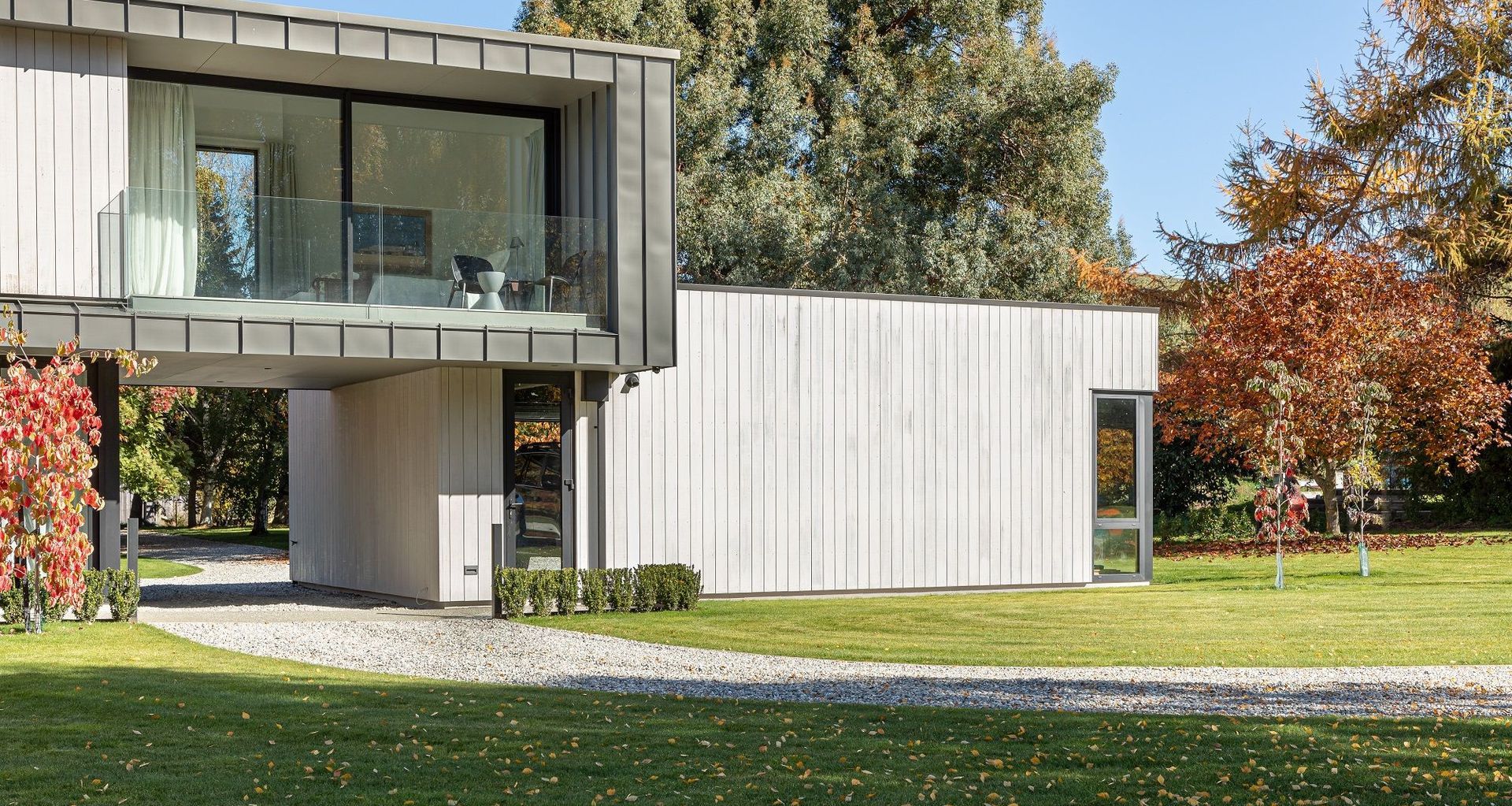
If you're about to embark on a new build project or need to do some recladding of your existing home it pays to spend some time investigating the sustainable cladding solutions on the market. There was a time when you'd have to pay a premium to be eco-friendly but modern manufacturing processes, greater industry awareness and increasing demand have made these options much more accessible.
1. Sustainably sourced timber
Sustainably sourced timber cladding is regarded as one of the more environmentally friendly options available in New Zealand. When harvested from well-managed forests that follow strict standards, such as FSC (Forest Stewardship Council) or PEFC (Programme for the Endorsement of Forest Certification) this cladding can be relatively low in embodied energy, especially compared to materials like concrete or metal. These standards help maintain forest health, and biodiversity and ensure these renewable resources are preserved for future generations.
New Zealand also produces a lot of its own local timber which minimises transportation-related emissions. Our sustainably sourced wood is also processed with fewer chemical additives which is always a positive quality in any discussion about eco-friendly solutions.
The only issue with timber cladding is that it does require periodic maintenance, such as staining, oiling or painting to preserve its appearance and durability. However, the overall environmental advantages described above make it a great option as far as sustainable cladding goes.
Related article: The advantages and disadvantages of timber cladding
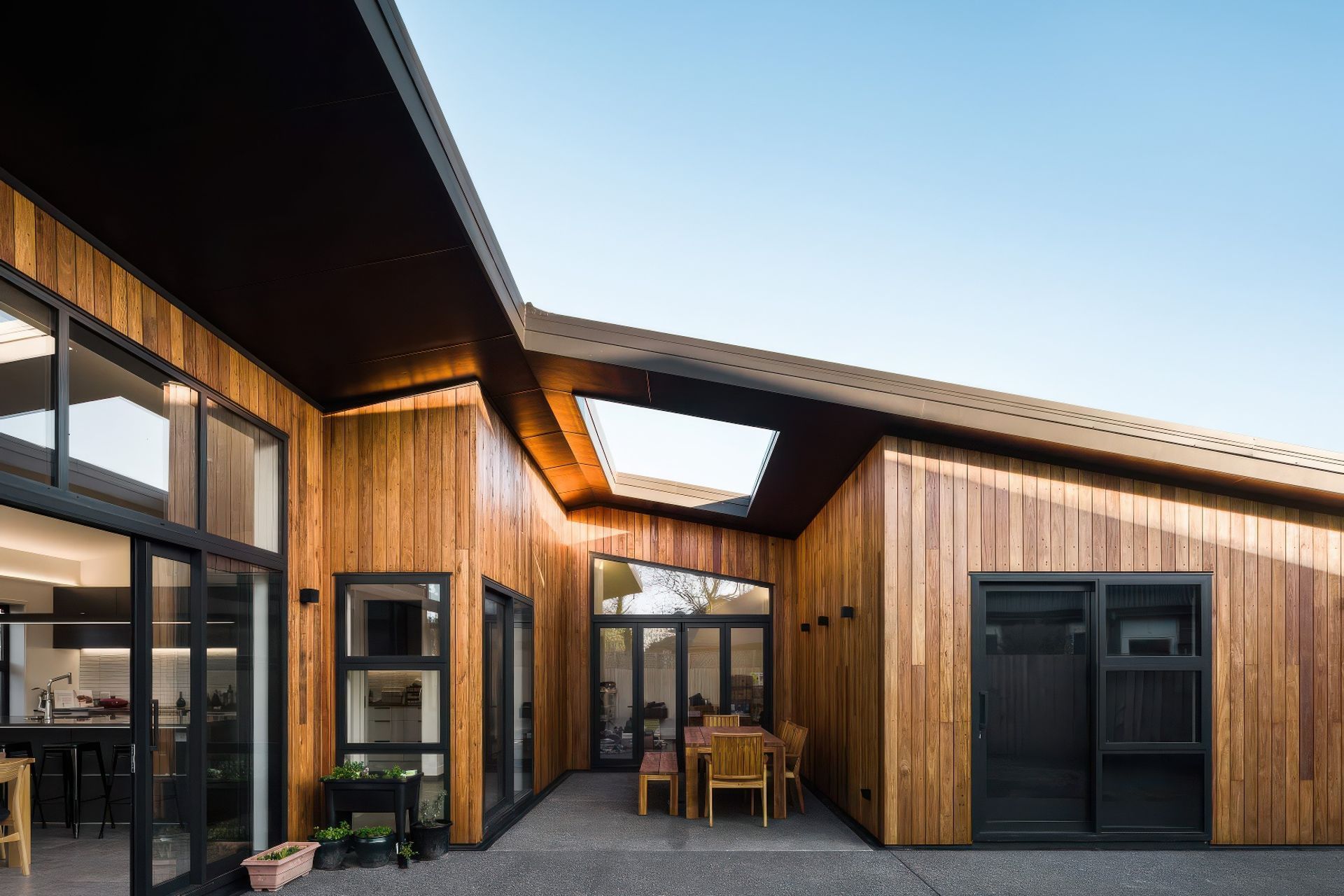
2. Thermally modified timber
Timber is synonymous with our residential architecture. Conjure up an image of a Kiwi home and, chances are, classic weatherboards come to mind. However, despite being renewable, timber is not always the most durable of choices — especially for cladding which is consistently exposed to harsh environmental conditions. While we’ve used treated timber for decades, when it does come to the end of its life, the chemicals used for treating it mean it isn’t biodegradable and can’t be burned.
These issues ultimately led to the development of a range of alternatives including thermally modified timber, a viable and long-lasting solution that utilises no chemicals during the manufacturing process. Rather, its very makeup is altered during the modification process, which uses heat and steam. At the end of thermally modified timber’s life, it is biodegradable and not dangerous.
During the modification, in which the timber is exposed to temperatures of up to 190℃, the moisture content is removed and the chemical and physical properties are altered, giving it an extended durability without chemical intervention. It’s for these reasons thermally modified timber is one of the best sustainable cladding materials available.
Related article: What is the most cost effective cladding in New Zealand?
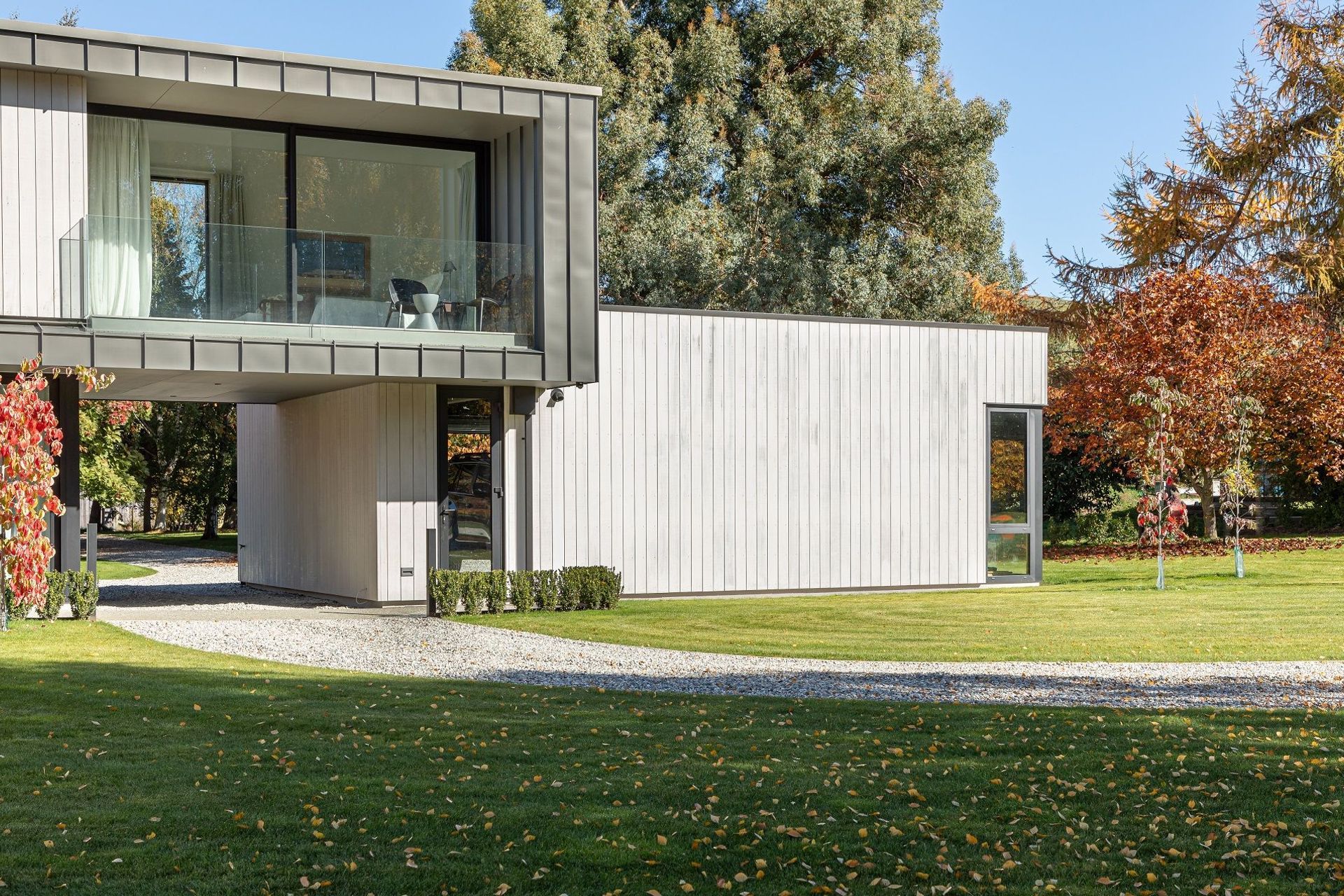
3. Locally sourced bricks
Brick cladding is an incredibly popular choice in New Zealand (and the world over) with some great traits that make it a viable option in the conversation about sustainable cladding materials. This includes their natural durability, low maintenance requirements, thermal insulation and more.
Sustainability is often considered in terms of the whole-of-life impact of a product or building, and this is where bricks come to the fore as a contender in the marketplace. Homes adorned with brick cladding last for decades (even centuries), offering a tremendous financial and environmental return on investment. They are made from abundant sources of clay and can be salvaged, reused or recycled — a further testament to their long-term value.
When combined with the appropriate insulation, bricks can offer a thermal mass benefit that allows for the reduction of energy loadings and keeps your home warmer in winter and cooler in summer.
The main arguments against brick as a sustainable option are primarily down to the energy-intensive production process and the emissions from their transportation due to their weight. However, technology is improving to the former to reduce this and by prioritising locally sourced bricks, you'll reduce the impact of the latter too.
Related article: The art of brick selection — A definitive guide for New Zealand homes

4. Aluminium cladding
There are many types of metal cladding available in New Zealand and if you're after an eco-friendly cladding option, aluminium has a lot going for it.
Aluminium is 100% recyclable without any loss of quality and many local options incorporate some element of recycled content in their final product. Many manufacturers also employ processes where the excess core material is recycled back into the manufacturing process resulting in minimal wastage.
It is both durable and lightweight resulting in its long lifespan and low transportation and energy costs. Its natural resistance to corrosion is also significant in New Zealand, given the coastal exposure many homes have. The low maintenance aspect of aluminium is also a huge positive.
The production of aluminium from raw bauxite is incredibly energy-intensive and a lot of solutions on the market are imported which are two carbon footprint factors that can't be ignored. However, there are some options that are locally manufactured using hydro-electric renewable energy which does mitigate these factors.
Related article: The pros and cons of metal cladding for New Zealand homes
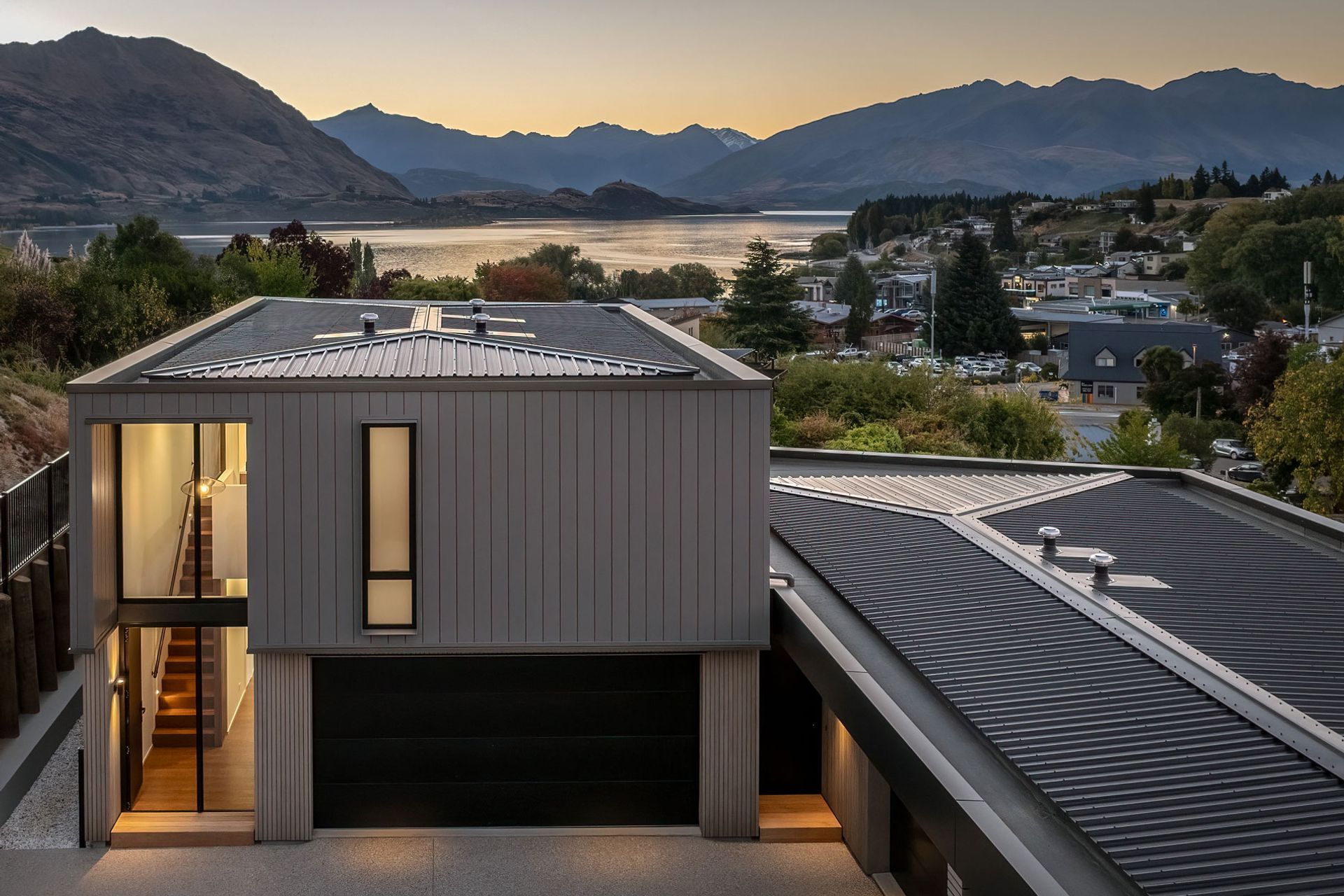
5. Steel cladding
Another type of metal cladding that can be included as a sustainable exterior cladding option is steel, sharing many of the same strengths as aluminium.
It is incredibly robust and has the ability to be recycled providing long-term value beyond its initial use. It is resistant to weather and pests with a lifespan of decades. Modern products also often feature reflective finishes that improve a building's performance leading to greater energy efficiency.
Like aluminium, its production is energy-intensive, however, New Zealand does locally produced products like COLORSTEEL® which is made using de-carbonising technologies with a high percentage of renewable energy and recycled water used during its production processes.
Steel can also be prefabricated, reducing construction time and waste and is infinitely recyclable contributing to the circular economy.
Related article: Different types of cladding in New Zealand
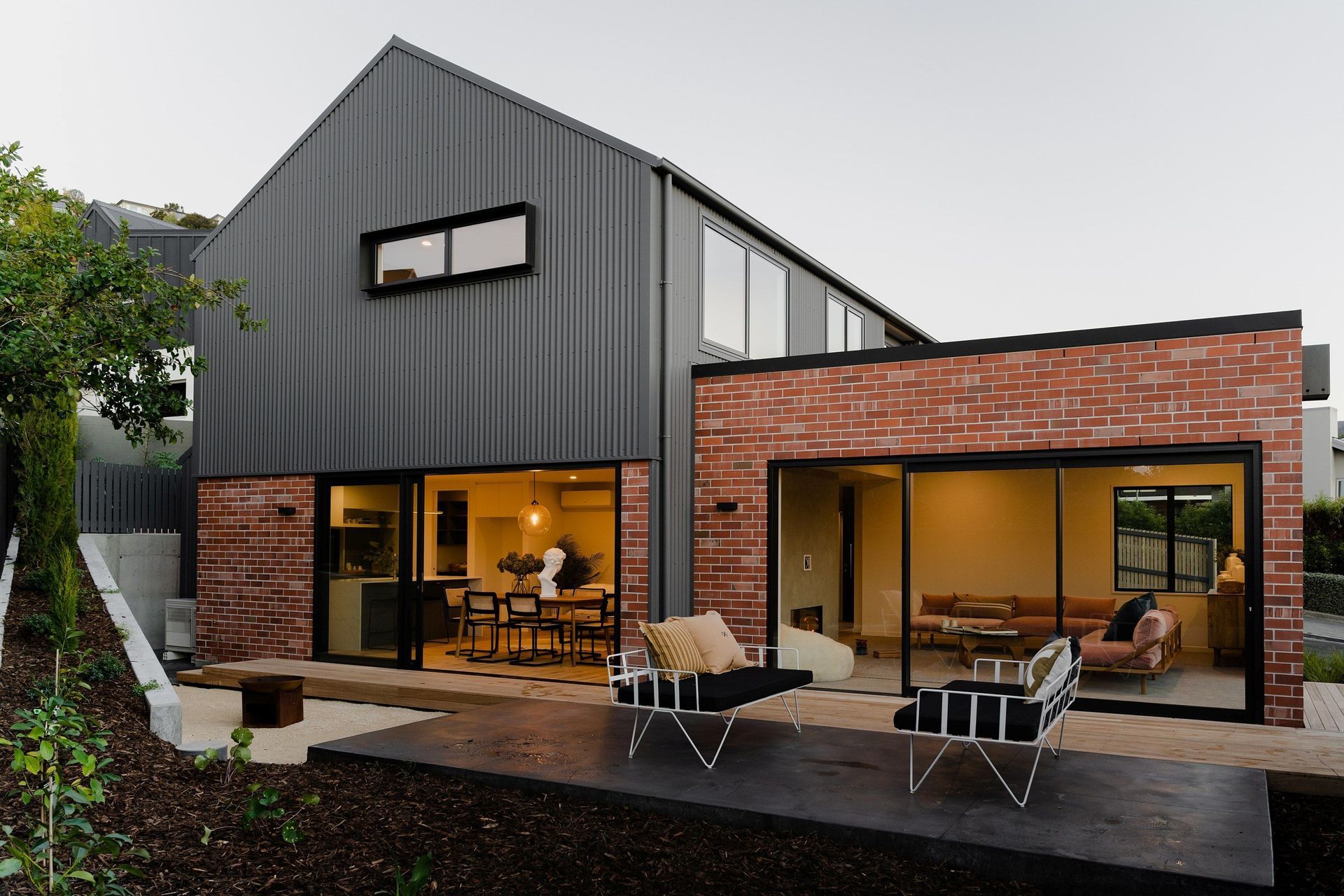
6. Fibre cement cladding
Fibre cement cladding might surprise some as an inclusion on this list due to its chequered history in New Zealand with the leaky homes crisis of the late 80s and 90s but but modern solutions do have some strong traits to merit it. These are fundamentally its durability, long lifespan, and relatively low maintenance requirements. When installed professionally, its low repair and replacement needs greatly lower its long-term resource consumption as a cladding solution.
On the other hand, fibre cement production involves cement, which is known for high embodied energy and CO₂ emissions. Many manufacturers have begun to incorporate recycled materials and optimise energy usage. There is a decent range of fibre cement cladding that is manufactured locally which also helps lower the carbon footprint for freight and transportation. You can often see their credentials with product-specific certifications or environmental product declarations which can help inform your decision.
Related article: Exquisite house cladding ideas for the modern home

7. Composite cladding
Composite cladding, which combines wood fibres, plastics, and bonding agents, is another one that has become a viable option as a sustainable building material due to modern manufacturing processes. Many composite cladding solutions now incorporate recycled wood fibres and plastics, improving their environmental profile and aligning closer with greener building practices in the construction industry. Its durability, resistance to moisture, and low maintenance requirements also reduce the need for frequent replacements and chemical treatments.
However, there is a bit of due diligence required by the builder and homeowner to ensure they are choosing a product that is certified under local or international green building standards using predominantly renewable or recycled content. Composite boards that rely heavily on virgin plastics or non-renewable resources inevitably result in a higher embodied energy and carbon footprint. Investigating end-of-life disposal is also worth doing as any option that cannot be easily separated into its constituent materials for recycling or upcycling will potentially increase the waste sent to landfills.
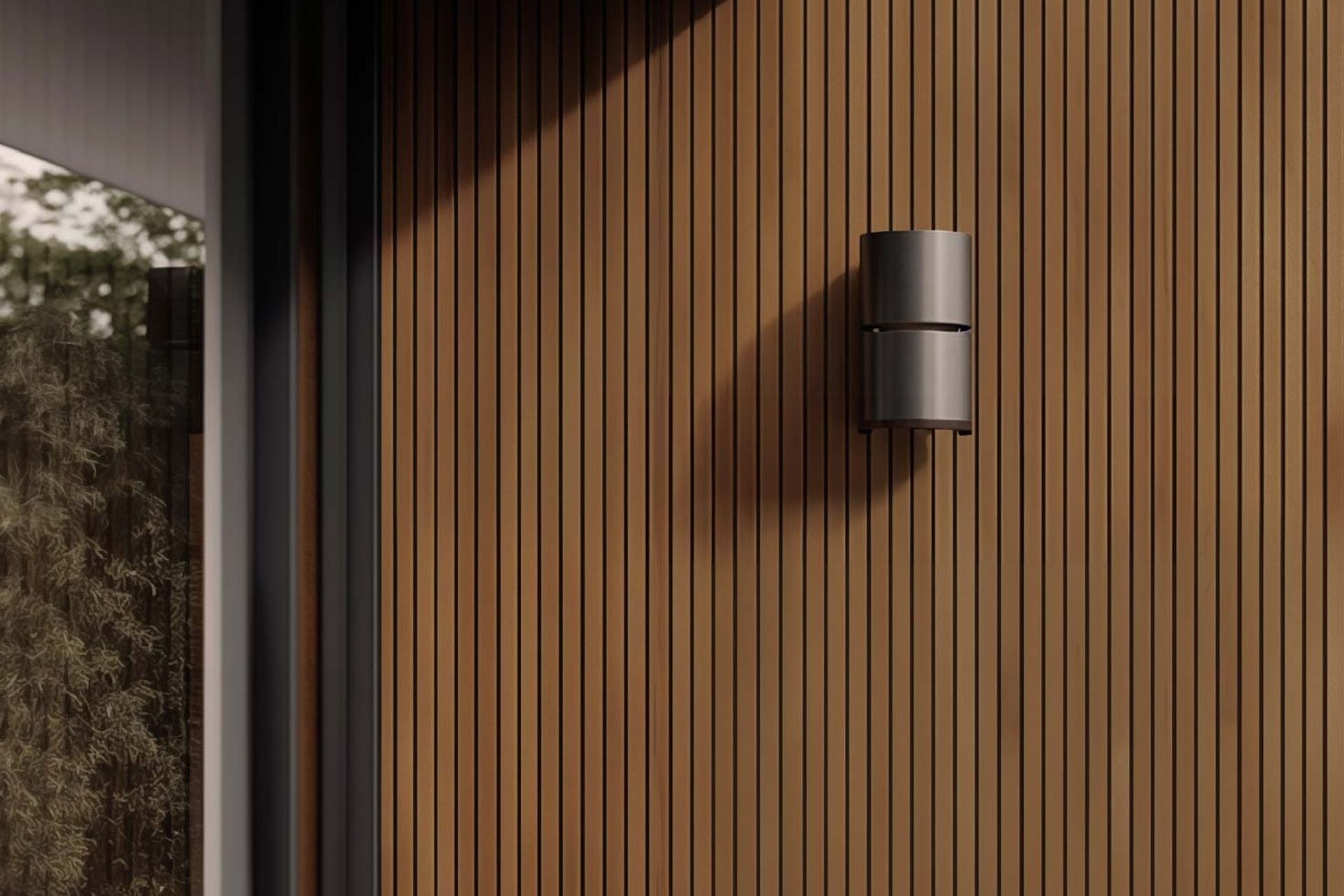
Some fantastic sustainable cladding solutions to consider
There are some fantastic sustainable cladding materials to consider for your next eco-friendly building project. As discussed, these options are becoming increasingly prevalent in the market in New Zealand making it more accessible to architects, builders and homeowners across the country which bodes well for the future.
(This article was updated on the 6th December 2024)
Discover an extensive range of high-quality cladding solutions for your next project on ArchiPro
